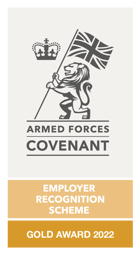In the world of AI and Defence, the Defence AI Centre (DAIC) is leading the charge, fostering collaboration between government, industry, academia, and allies for the strategic advantage of the UK Armed Forces. The recent industry engagement day on 27 November, DAIC Connect provided a platform for representatives from various AI companies with a Defence focus to come together and discuss the latest plans and innovations in the field.
Charlie Forte, Chief Information Officer, UK Ministry of Defence, set the tone for the day by emphasising the importance of a connected and joined-up approach. The DAIC is implementing a federated model to AI in Defence to facilitate collaboration and innovation. Charlie Forte stressed the need to balance groundbreaking ideas with practical, lessons-learned applications and to support and guide the evolution. Commodore Rachel Singleton, who leads the DAIC, then provided a high-level overview of DAIC's role as a champion, enabler, and innovator in AI across Defence, focusing on strengthening the ecosystem and exploring AI at pace and scale.
Insights from Different Military Branches
Representatives from the Front Line Commands shared their strategies and initiatives:
- Captain Keith Taylor, Head of C5ISR, Navy Develop, outlined the vision, objectives, and the role of the Navy AI Cell in accelerating the adoption of AI-enabled capabilities, emphasising the need to increase lethality and availability of the current force.
- Carla Hodges, Head of the Navy AI Cell, discussed the importance of pathfinder projects and their role to inform enabling workstreams and solve organisational wide problems.
- Lieutenant Colonel Keith Hebard, SO1 AI, Army Headquarters presented an introduction to their AI strategy, highlighting the structured approach around people, process, and data, and the functions and aspirations of the AI Centre.
- Group Captain Edward Whitechurch, DACOS Integration Strategy, Air Capability, spoke about the need to engage with the AI ecosystem, prototype benefits of AI, scale quickly, and address the challenge of busting myths surrounding AI adoption in the Air Force.
Finally, Dina Kakaras, Head of Commercial X, shared insights into their disruptive approach, emphasising the need to start small, embrace risk, and be disruptors in the field. The significance of SMEs in driving innovation was acknowledged, with a focus on Pathfinder projects capturing lessons and driving change.
Closing Remarks and Looking Ahead
John Ridge CBE, Director Defence Innovation, stressed the importance of industry expertise in innovation, outlined the goals of the Defence Innovation Unit and DASA, and called for a collaborative approach across industry in achieving what he described as "Innovation 2.0."
To end the day, Air Vice-Marshal David Arthurton OBE, Director Strategy and Military Digitalisation, Defence Digital, expanded the conversation to encompass the broader aspects of defence innovation, including data, infrastructure, and enterprise synergy. He underscored the efficiency gained through lateral communication and the significant role of trust in enabling successful enterprise development. Trust, he argued, must be earned and is a critical element in bringing all stakeholders on board for the journey.
The day highlighted the transformative potential of AI in Defence and the collaborative efforts needed to navigate challenges. As the landscape evolves, the call for a shared mission between Defence and industry becomes ever more crucial, emphasising customer-centricity, transparency, and trust in fostering a culture of innovation. DAIC Connect provided a glimpse into the future of AI in Defence, where collaboration and innovation are the driving forces propelling the UK Armed Forces into a new era of strategic advantage.
You can see the slides used by the MOD presenters on the day here and can see a video summary of the day here.
Our next major Defence activity will be the Army Counter-Intelligence and Security Conference on 28 February. We look forward to seeing you there.




Leave a Comment